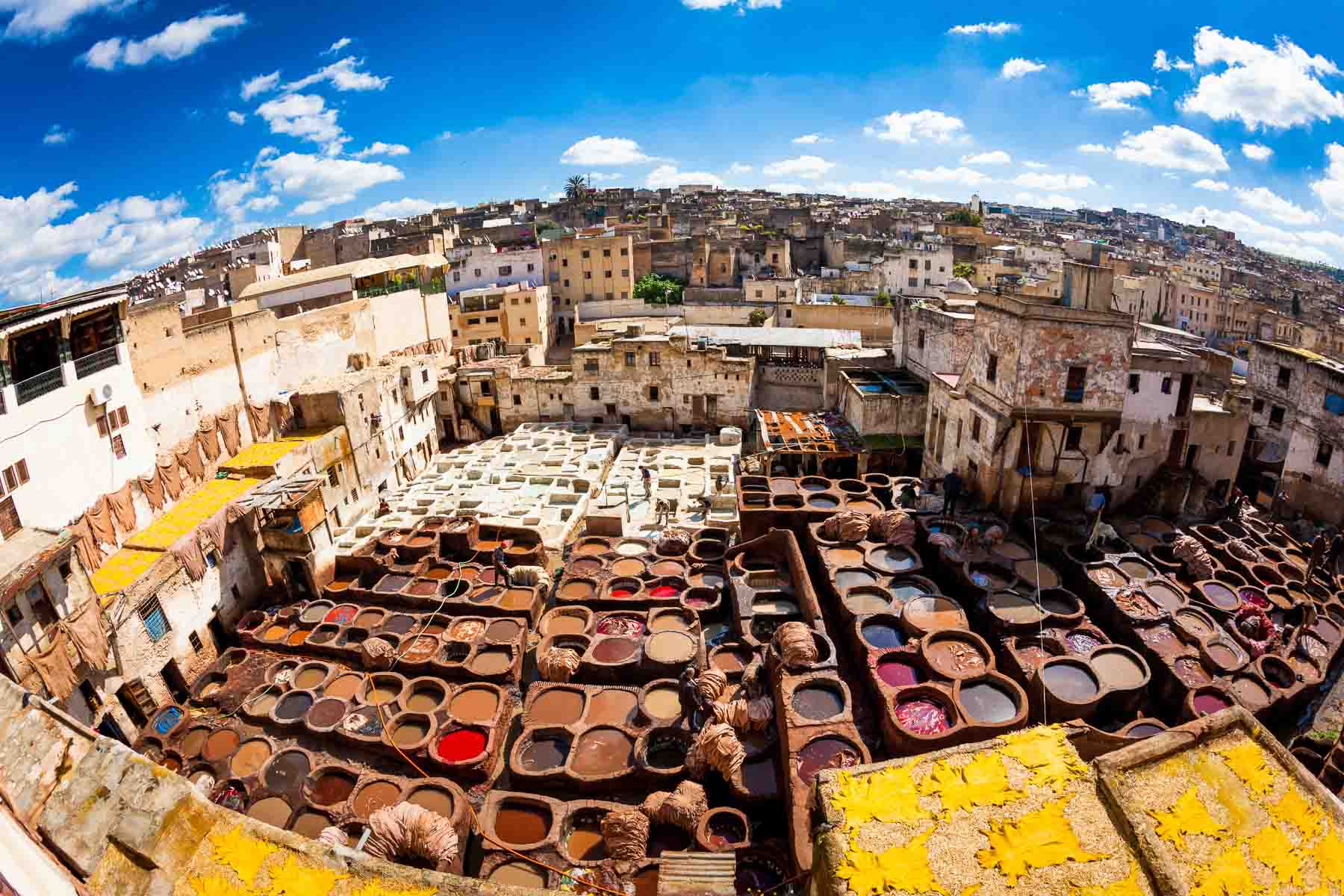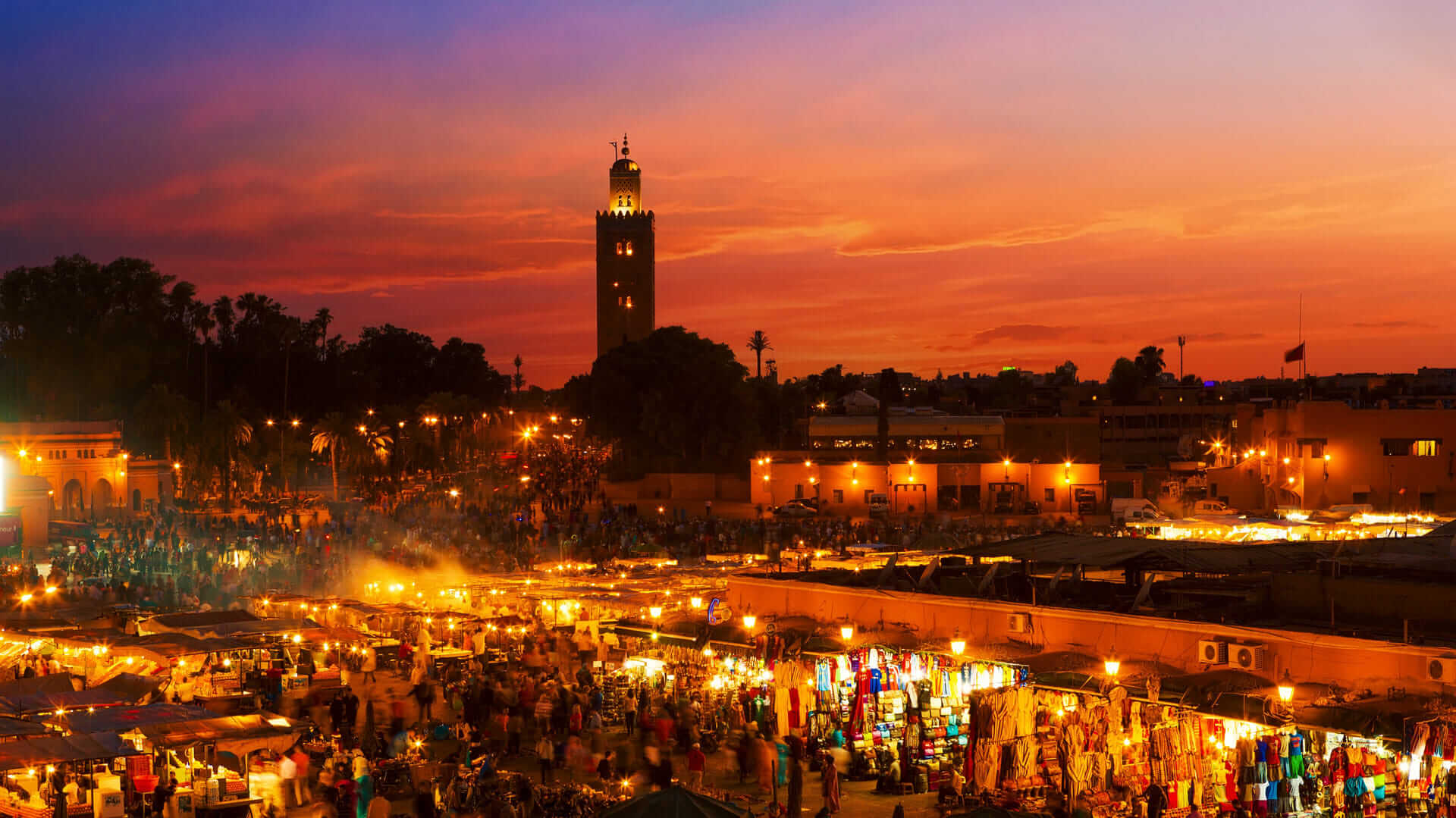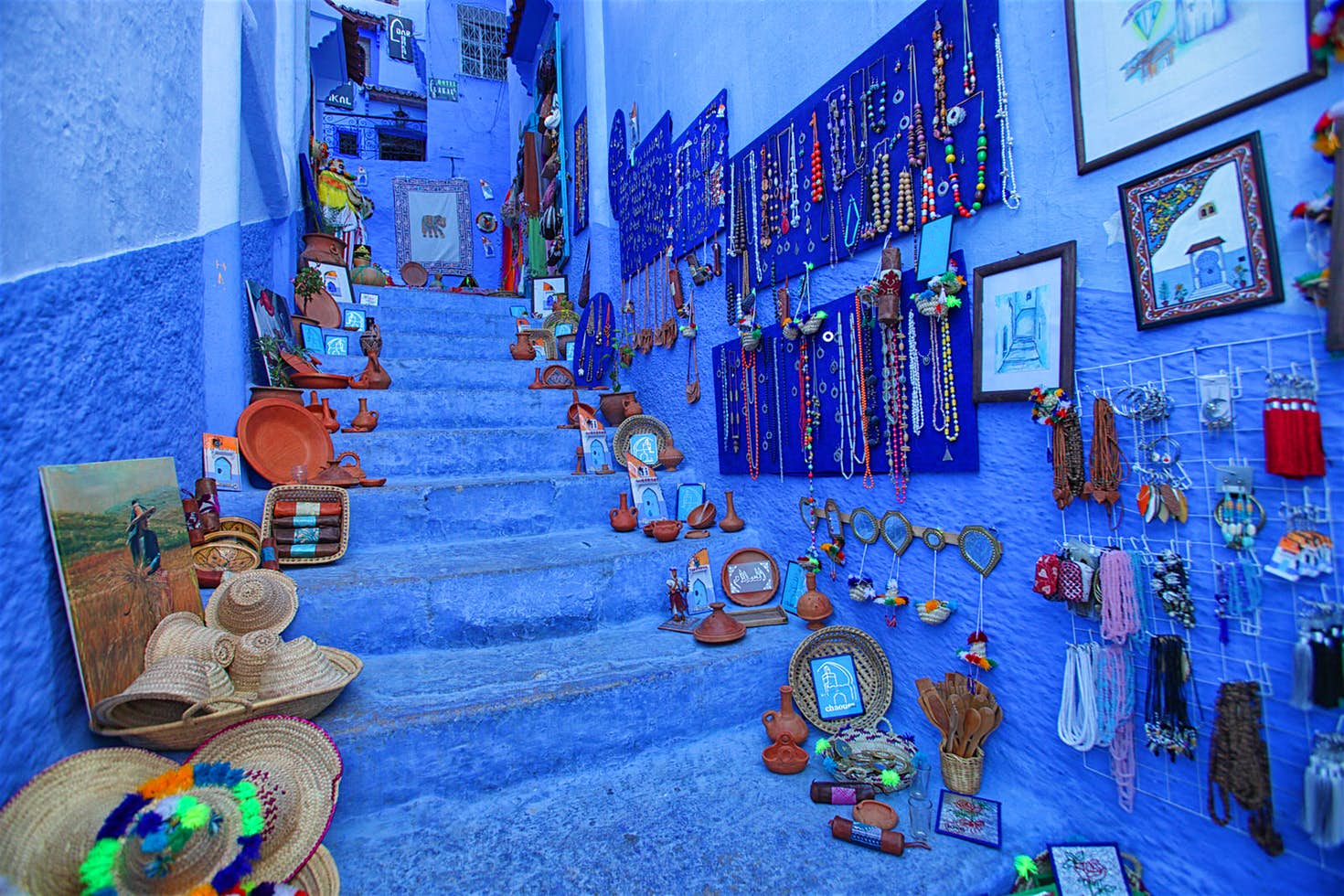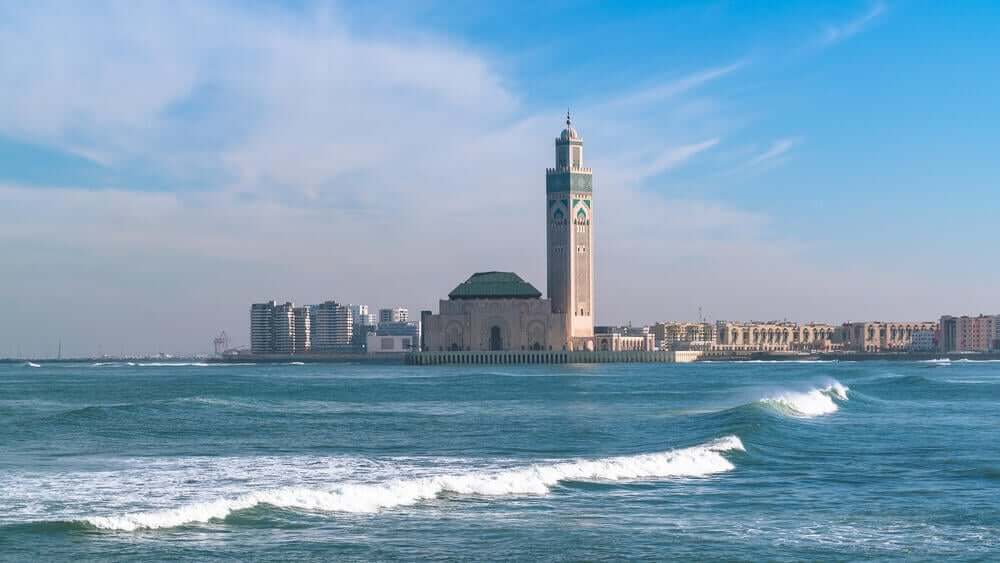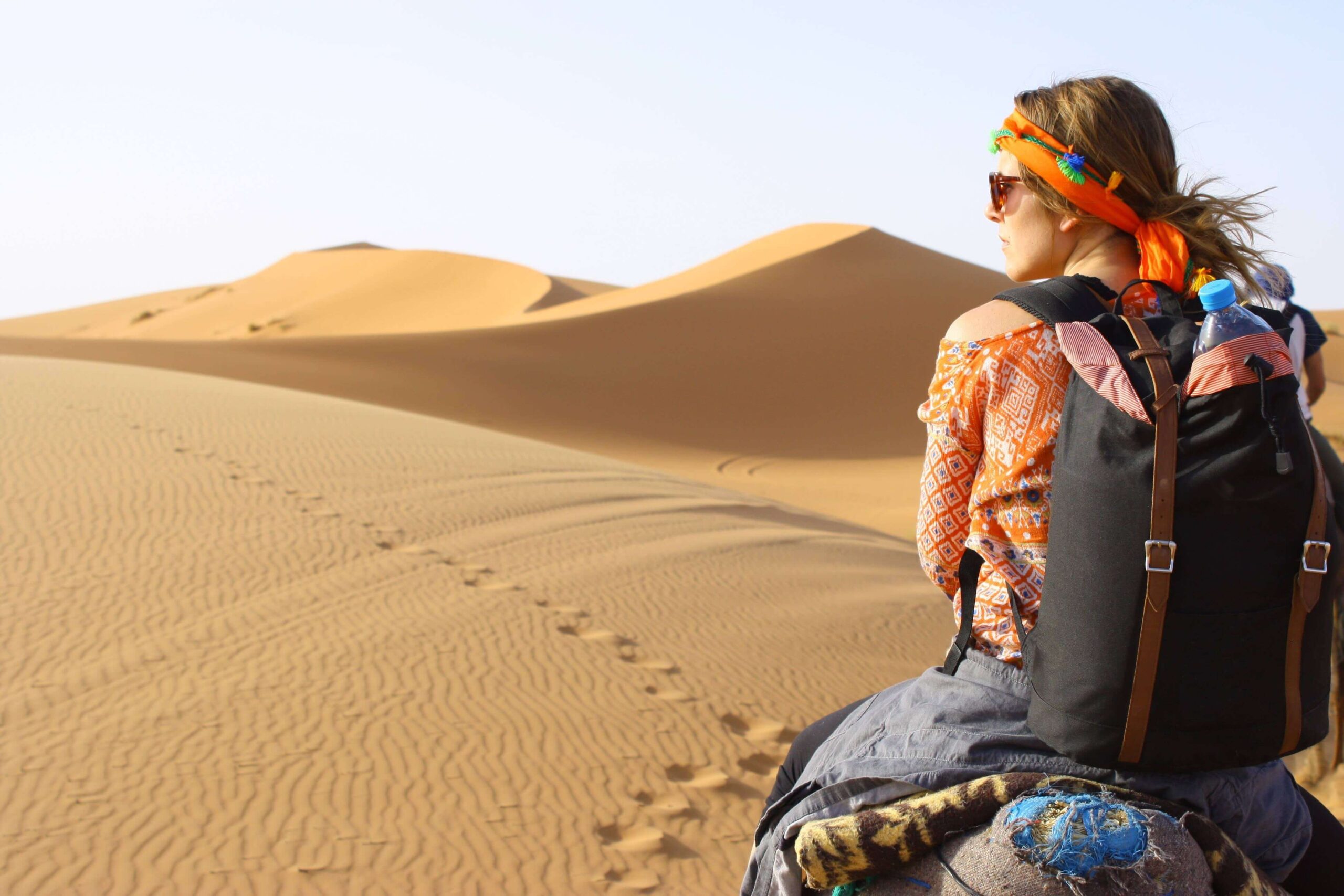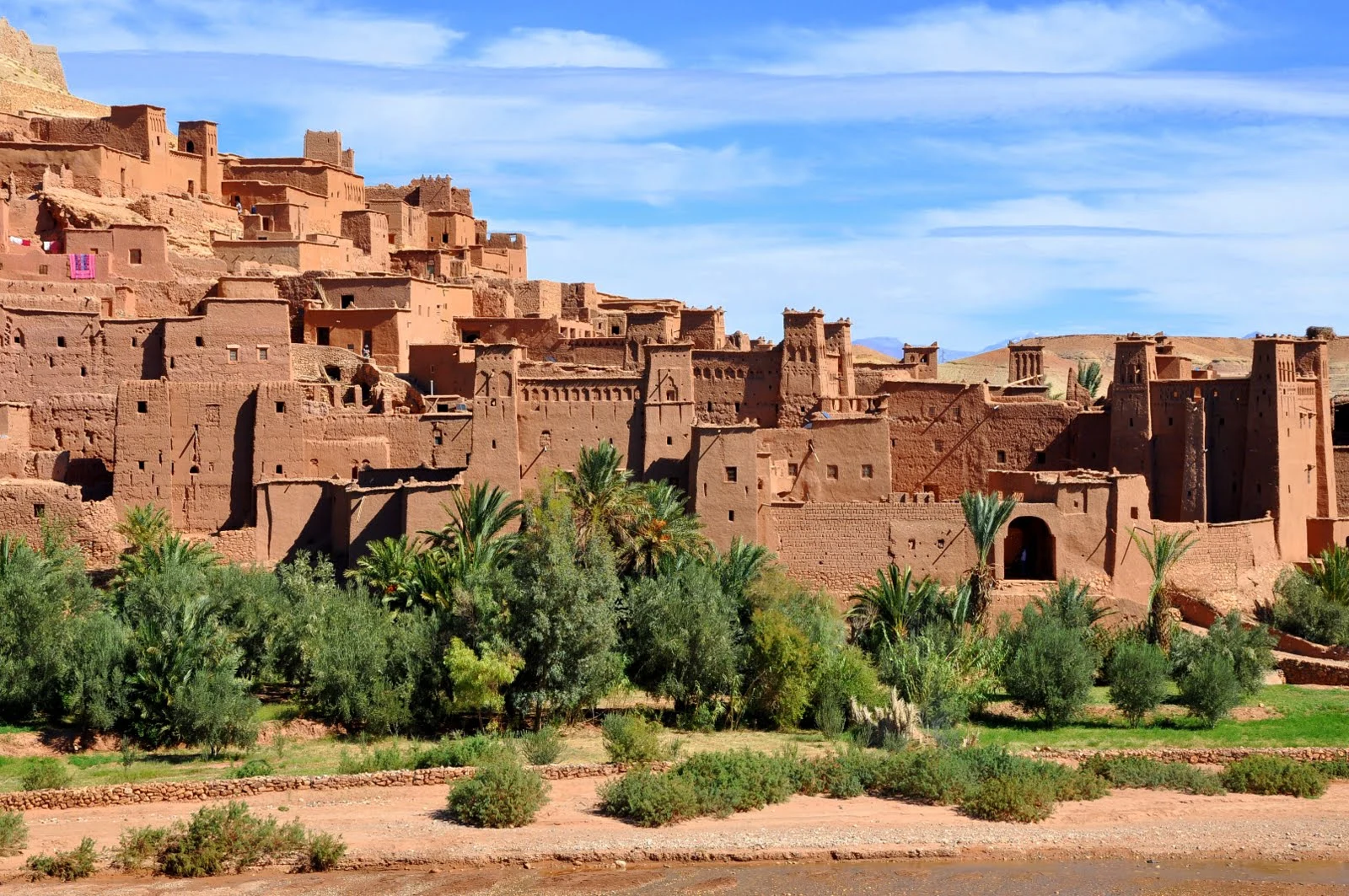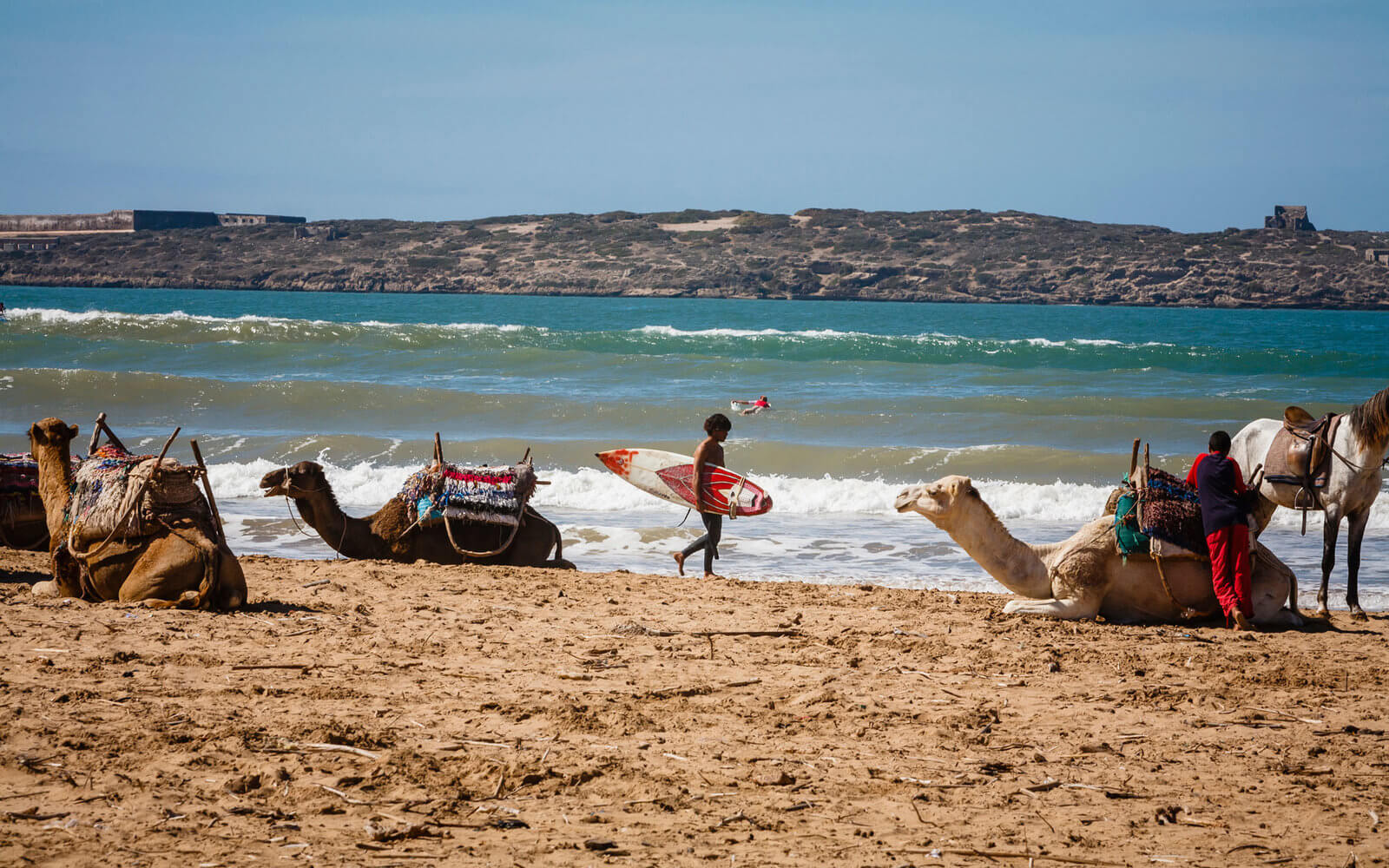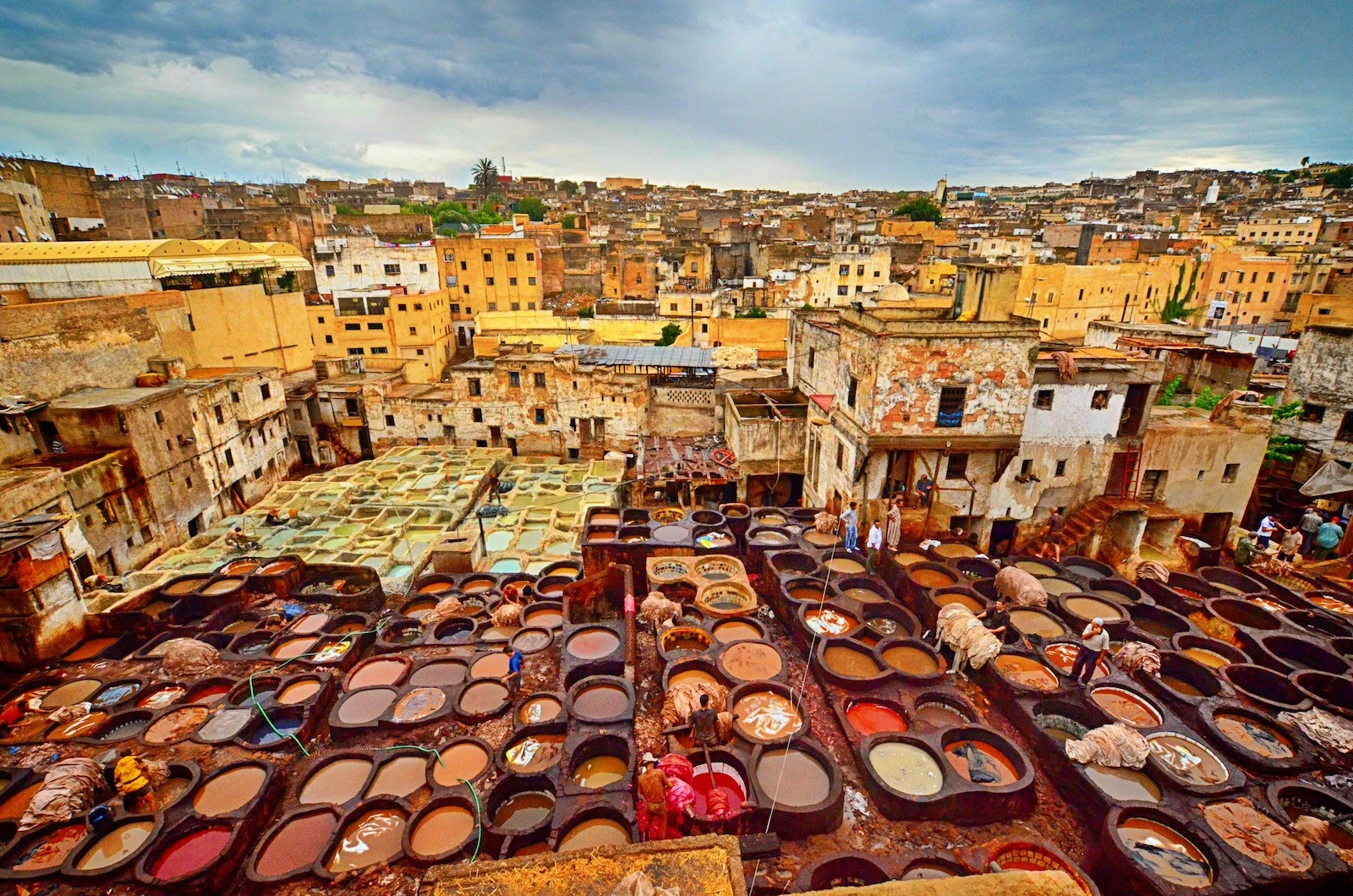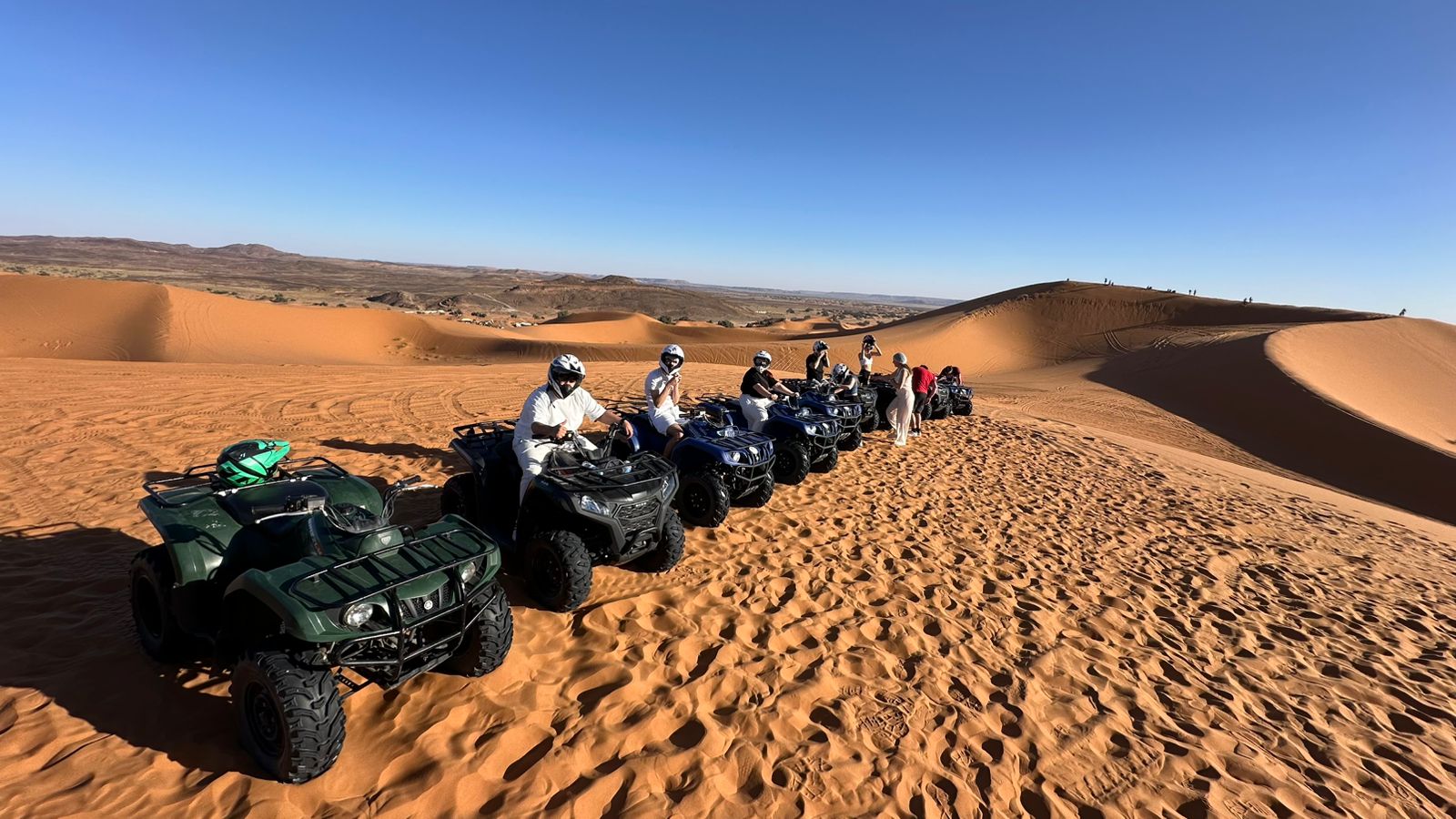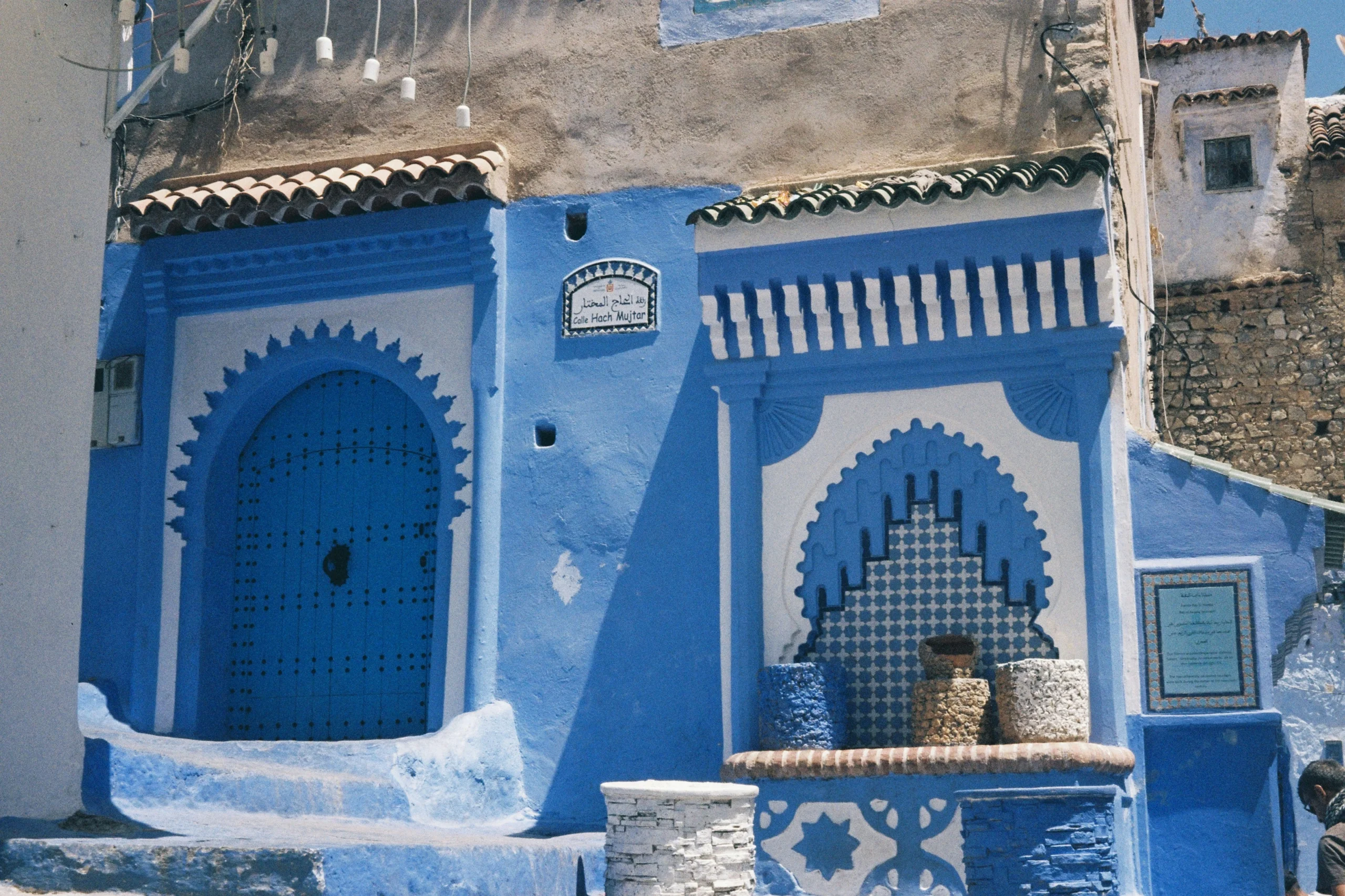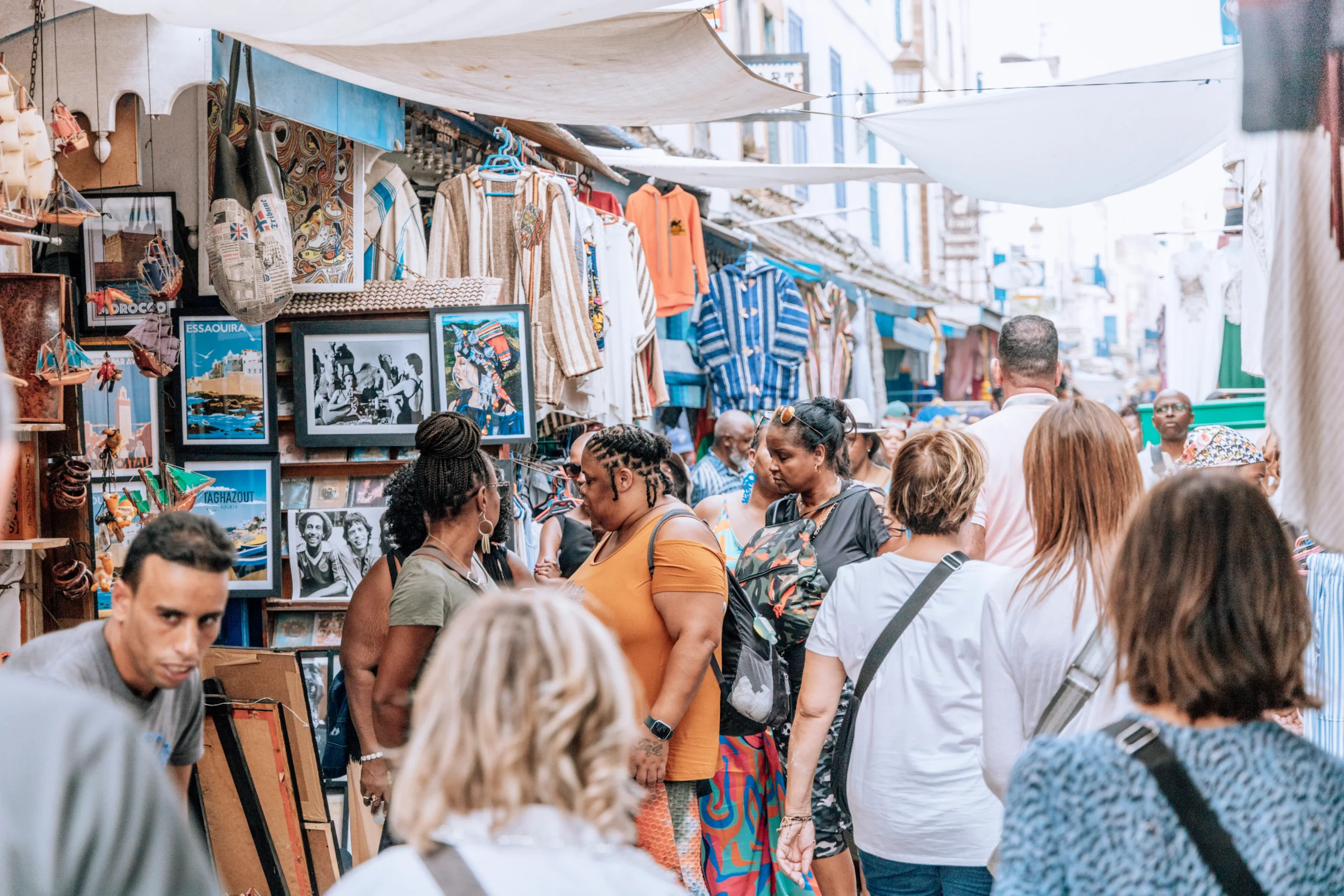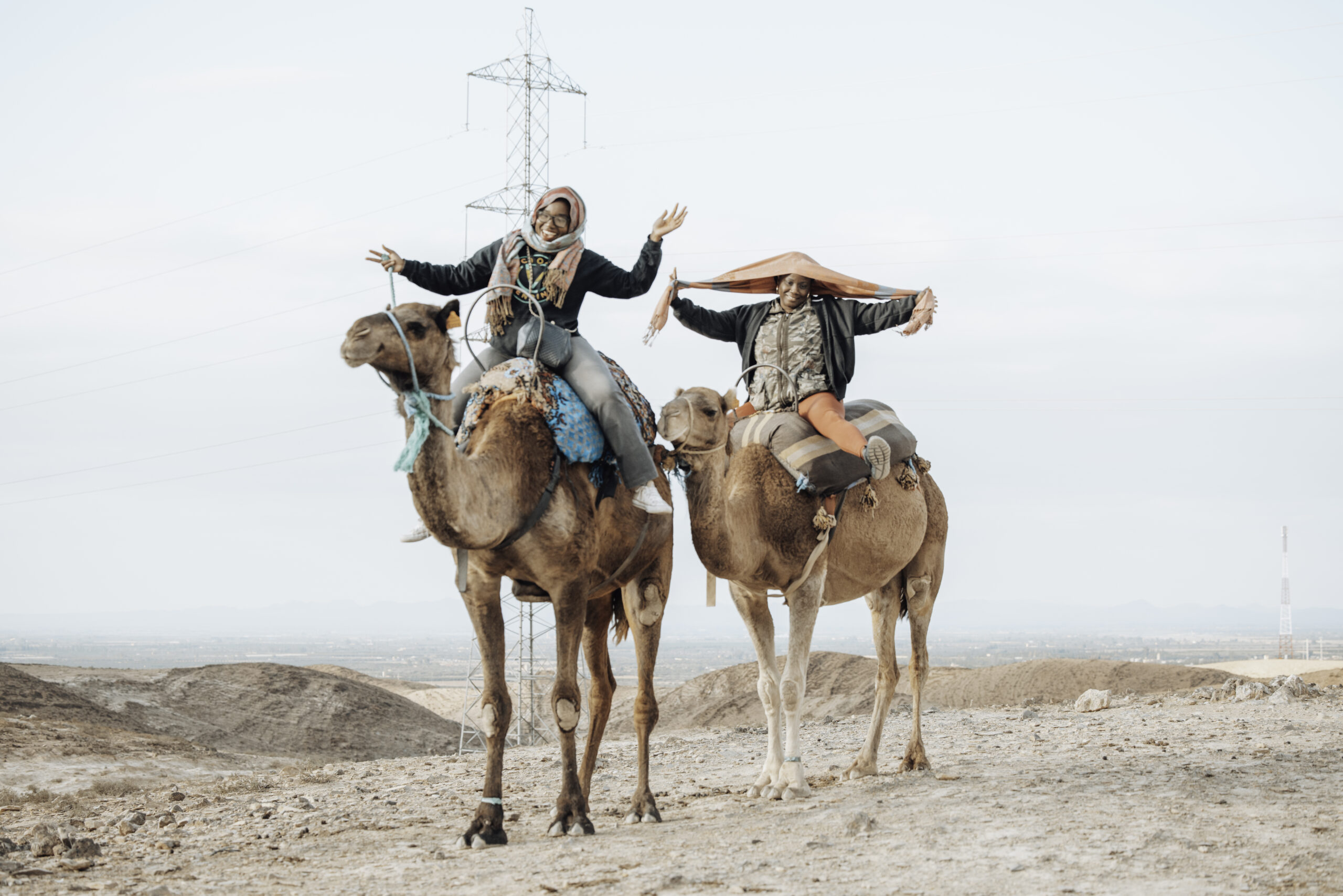Must-See Attractions for your Moroccan Itinerary
Explore the heart of Morocco, a place where the charm of the past and the present coexist in perfect harmony. Cities like Marrakech, Fes, Casablanca, and the paranormal Chefchaouen in Morocco are becoming more popular tourist destinations. Imagine a trip to the Sahara, where the sun rises across golden sand dunes, or a visit to one of the ancient, thriving medinas of Morocco. More than simply a vacation to Morocco, “Morocco Travel 4×4” converts your trip into an unforgettable, personalized experience. As a leading tour operator, “Morocco Travel 4×4” is committed to designing exquisite custom vacations that fully experience Morocco. Let “Morocco Travel 4×4” show you the best of Morocco’s beautiful landscapes and exciting urban centers as you plan your next vacation there. Discover the top places to go in Morocco that will really enhance your trip. Here’s a list of Must-See Attractions for your Moroccan Itinerary:
Must-See Attractions for your Moroccan Itinerary
1. Marrakech's Medina
The Medina of Marrakech, often known as the “old city,” is the city’s cultural and historical center. Surrounded by high walls, it seems like something out of a fairy tale. From its lively souks to its beautiful buildings, the Medina displays the very heart of Moroccan culture.
- Jemaa el-Fna Square:
Usually referred to as the “beating heart” of Marrakech, this square is the focus of activity in the Medina. During the day, it’s the center for henna artists, snake charmers, and orange juice stands. As the sun sets, it morphs into a big food market with kiosks providing Moroccan delights.
Take in the lively environment while eating in traditional Moroccan cuisine like tagine and harira and watching performances by Gnawa musicians and storytellers.
- Souks:
The souks, marketplaces selling everything from spices to fabrics to jewelry to traditional Moroccan handicrafts, are spread out in a maze of winding passageways off of Jemaa el-Fna.
Shop for authentic Moroccan goods, participate in friendly bartering with vendors, and immerse yourself in the colors, sounds, and fragrances.
- Koutoubia Mosque:
This magnificent Almohad mosque was built in the 12th century and is an important attraction in Marrakech. Its minaret can be seen from almost anywhere in the Medina, making it a useful landmark.
Although non-Muslims are not permitted inside the mosque, they are welcome to enjoy the tranquility of the gardens that surround it anywhere in Medina.
- Saadian Tombs:
These tombs were first found in 1917, and they date back to the Saadian kingdom in the 16th century. There, Saadian emperors and their family are laid to rest.
Discover the magnificent cedar wood and marble sculptures as you wander the elaborately adorned rooms.
Tips for Visitors:
- Dress Modestly: As a sign of respect for local customs, both men and women should wear clothing that covers their shoulders and knees.
- Beware of Pickpockets: Like any other popular tourist spot, it’s wise to be cautious of your belongings.
- Hire a Local Guide: The Medina can be overwhelming for first-time visitors. A local guide can help navigate the maze-like streets and provide valuable insights into the history and culture of the area.
- Stay Hydrated: Marrakech can be hot, especially during summer. Carry water with you and take breaks in shaded areas.
2. Chefchaouen: The Blue Pearl of Morocco
Located in the Rif Mountains of Morocco, the attractive city of Chefchaouen is known for its unique blue decor. Travelers looking for a peaceful and memorable experience love this place for its picturesque streets and rich history.
- Blue Streets and Buildings:
Nearly every building in Chefchaouen is a unique shade of blue. The tradition extends back hundreds of years and has multiple proposed origins, including introduction by Jewish settlers as a means of warding off insects.
Get lost in the labyrinth of blue roads and alleys. Every corner is a photographer’s delight, with bright pops of color provided by the red and pink flowers that pop against the blue walls.
2. Kasbah Museum:
The Kasbah is a fortification right in the middle of the medina, and it includes a museum that tells the heritage of the area.
Climb up for sweeping views of the blue city and see the Andalusian gardens and ethnographic museum.
3. Plaza Uta el-Hammam:
The heart of Chefchaouen’s medina (old town), Plaza Uta el-Hammam. The heart of the old city of Chefchaouen, where you’ll find the Grand Mosque and several cafés and restaurants.
- The plaza is the nerve center of Chefchaouen, where both inhabitants and visitors congregate. In the evenings, when families come out to unwind and let the kids run about, it really comes alive.
- The square’s historical significance is reflected in the notable landmarks that surround it. The Great Mosque (or Grand Mosque) in Chefchaouen is one of the most recognizable because of its distinctive octagonal minaret.
- Restaurants and cafes line the perimeter of the area, allowing guests to take in views of the square as they dine on traditional Moroccan cuisine. The tiered seating is perfect for taking in the scenery and people-watching.
- A number of little streets branch out from the plaza, each lined with shops and souks. These retail establishments provide anything from local vegetables and spices to exotic carpets and hand-woven textiles.
- The Kasbah is a fortified area with a park, a museum, and an art gallery; its entrance is located on one side of the plaza. The Kasbah provides a window into the past and present of the country of Morocco.
- The area has a pleasant atmosphere because to the regular performances of local artists who play traditional instruments.
- Plaza Uta el-Hammam is a popular gathering place for locals to gather for special occasions and festivals. If you time your trip well, you may catch some live music, a dance performance, or any other cultural event.
If you ever find yourself in Chefchaouen, don’t leave without stopping at Plaza Uta el-Hammam. It captures the spirit of the city by providing an exciting mix of historical significance, cultural significance, and modern day activity. Spending time in the plaza is an unforgettable experience, whether you’re enjoying a cup of mint tea, perusing local handicrafts, or doing any of the above.
4. Ras Elma:
A beautiful landscape where the Ras Elma River descends from the mountains. Take in the soothing sounds of the lake, browse the leather stores in the area, and climb the hill for a panoramic view of the medina.
5. Shopping in Chefchaouen:
Crafts produced in Chefchaouen are unlike anything else in Morocco. The Riffian goat cheese, handmade blankets, and hand-painted furniture are all worth the trip. Travelers especially love the local mint and wool clothing.
Tips for Visitors:
– Respect Local Customs: As always, it’s important to dress modestly, especially when wandering around this conservative town.
– Stay Overnight: To fully appreciate Chefchaouen’s tranquility, stay at least one night. The town is even more magical in the evening and early morning when day-trippers are absent.
– Haggling: Like many places in Morocco, it’s customary to haggle in the local markets. Start by offering half the price, and enjoy the friendly negotiation process.
– Local Guided Tours: Consider hiring a local guide to delve deeper into Chefchaouen’s history and hidden gems.
3. Hassan II Mosque, Casablanca
The Hassan II Mosque, located in Casablanca, the vibrant capital of Morocco, represents a symbol of the country’s rich past combined with modernity on the coast of the Atlantic Ocean. It is awe-inspiring to see one of the world’s biggest mosques, and this one is no exception.
- Architecture and Design:
A spectacular synthesis of modern elements and traditional Moroccan style. Its magnificent mosaics, woodwork, and architectural moldings were created by master craftsmen from all throughout the country.
The mosque has the world’s highest minaret at 210 meters, complete with a laser light aimed toward Mecca.
2. Prayer Hall:
The massive mosque’s prayer hall can hold up to 25,000 people, while the surrounding grounds can hold another 80,000.
Because its ceiling is collapsible, the prayer hall may be turned into an open-air venue for special events.
3. Location:
The glass floor of this mosque allows worshipers to kneel directly over the Atlantic Ocean, an experience unlike any other.
Seeing the Atlantic for the first time is a mystical experience, particularly at sunset.
4. Hammam and Ablution Rooms:
Below the mosque, there are traditional Moroccan hammams (bathrooms) and ablution rooms with stunning zellij (tilework) and fountains.
5. Museum and Library:
The mosque complex also houses a museum and a vast library. The museum showcases the history and architectural journey of the mosque, and the library holds a plethora of Islamic literature.
Visitor Information:
– Tours: Guided tours are available for non-Muslim visitors, making it one of the few mosques in Morocco that allows non-Muslims inside. The tours are available in multiple languages and provide insights into the mosque’s history, architecture, and cultural significance.
– Dress Code: Out of respect for religious practices, visitors should dress modestly. It’s advised to wear clothing that covers the shoulders and knees. Headscarves for women aren’t mandatory but are appreciated.
–Timing: The mosque is open every day, but visiting hours for tourists might be restricted during Islamic prayer times. It’s best to check in advance.
– Entrance Fee: There is a fee for the guided tours. It’s recommended to purchase tickets in advance or arrive early, especially during peak tourist seasons.
The Hassan II Mosque isn’t just an architectural marvel; it’s a symbol of Morocco’s openness to the world and a testament to its vibrant, evolving identity. Whether you’re drawn to its spiritual significance or its artistry, the mosque promises a deep dive into Morocco’s heart and soul.
4. The Sahara Desert: Morocco's Majestic Sea of Sand
The Sahara Desert in North Africa is about the size of the United States and is frequently referred to as the biggest hot desert in the world. Visitors visiting Morocco may get an impression of the desert’s immensity at its edge, where they can see huge sand dunes and learn about the culture of the local Berbers.
- Erg Chebbi Dunes:
The Erg Chebbi dunes, located close to the town of Merzouga, are well-known across the Sahara. These golden sand dunes may tower up to 150 meters in height. The sand dunes are best discovered by camel. The dunes’ ever-changing hues are captivating at any time of day.
2. Erg Chigaga Dunes:
These, which are situated close to M’Hamid, are less visited than Erg Chebbi and provide a more private desert adventure. Take a 4×4 adventure or a multi-day camel trip to really get a feel for the immensity.
3. Berber Encampments:
Berber nomads have been living in the Sahara for ages. Sleeping in a Berber tent is a common part of modern adventures. Experience Moroccan cuisine cooked over an open fire while enjoying traditional Berber music and dancing beneath the stars.
4. Oasis Towns:
Oasis villages like Erfoud, Rissani, and Zagora dot the desert’s periphery and provide historical entry points to the Sahara. Learn about the local culture in the ksours (old walled communities) and local marketplaces, and relax in the shade of palm trees.
5. Star Gazing:
With minimal light pollution, the Sahara offers some of the clearest night skies in the world. Witness the Milky Way in all its glory, spot distant planets, and if you’re lucky, catch a meteor shower.
Visitor Information:
Best Time to Visit: Between September and early June. The desert can be extremely hot in summer and surprisingly cold at night during winter.
What to Wear: Lightweight, breathable, and long-sleeved clothing to protect from the sun. Remember a hat, sunglasses, and sunscreen. For nights, pack something warm.
– Stay Hydrated: The arid environment can quickly lead to dehydration. Always carry ample water.
– Guided Tours: Given the desert’s vastness and potential hazards, it’s recommended to use a reputable tour operator when exploring the Sahara.
– Cultural Respect: When interacting with locals, especially in remote areas, it’s essential to be respectful of their customs and traditions. Always ask for permission before taking photos.
The Sahara Desert is a place of natural beauties, ancient civilizations, and deep serenity; it is much more than simply sand. Whether you’re riding a camel as the sunsets in a blaze of color, listening to the eerie sounds of Berber music, or just gazing out at the immensity of the desert in front of you, your time in Morocco’s desert will be one you’ll never forget.
5. Kasbah Aït Ben haddou: A Timeless Moroccan Citadel
Near Ouarzazate in southern Morocco lies the mud-brick fortification or “ksar” known as Kasbah (Ksar) “Ait Ben haddou,” an iconic structure that represents traditional Moroccan architecture and Berber kasbahs. Since 1987, this impressive collection of structures has been recognized as a UNESCO World Heritage site due to its outstanding significance in illuminating the history of the area;and has served as a backdrop for numerous films and TV series.
- Historic Significance:
The ksar of Ait Ben haddou is considered one of the best preserved in the whole Atlas Mountains. It was originally a major station for merchant caravans crossing the Sahara.
The site’s towering walls and turreted parapets are characteristic of strongholds in the south of Morocco.
2. Film and TV Recognition:
Because of its distinctive and ancient look, the Kasbah is often used as a backdrop for movies.
The likes of “Lawrence of Arabia,” “The Mummy,” “Gladiator,” and “Game of Thrones” have all made use of it.
3. Panoramic Views:
From the Kasbah’s highest point, visitors may take in incredible views of the desert and the contemporary town across the river.
The reddish tones of the clay structures are especially enchanting when bathed in the warm light of sunrise and sunset.
4. Traditional Architecture:
The houses, which are really a series of linked homes, are stunning representations of classic earthen clay construction in Morocco.
There’s a complex network of stairs and passageways within that connects numerous dwellings, common rooms, and storage places for food.
5. Local Artisans:
As you explore, you’ll come across local craftsmen offering handcrafted items, from traditional Berber jewelry to ceramics. Genuine keepsakes like this help sustain the economy of the place you visited.
Visitor Information:
While it’s possible to visit Aït Benhaddou on a day trip from Marrakech, it’s a long drive (about four hours one way). Many visitors opt to stay overnight in Ouarzazate or the nearby modern village to have more time to explore.
– Guided Tours: Hiring a local guide can enhance the experience, providing insights into the ksar’s history and the significance of its various structures.
– Entrance Fee: There’s a modest fee to enter the ksar, which contributes to its maintenance and preservation.
– Dress Appropriately: While Aït Benhaddou is a popular tourist attraction, it’s advisable to dress modestly out of respect for local customs.
– Accommodation: For an immersive experience, consider staying in one of the guesthouses or riads nearby. Some even offer views of the Kasbah.
The Kasbah Ait Ben Haddou shows the longevity of Moroccan architecture and culture. Visiting this fortress is like taking a trip back in time; it’s a great way to learn about the history of the whole country. Ait Ben Haddou is a must-see in Morocco for anybody interested in history, cinema, or just ancient architecture.
6. Essaouira: The Jewel of Morocco's Atlantic Coast
Essaouira is a picturesque port city in Morocco, renowned for its rich history, breathtaking coastline scenery, and thriving arts scene. The city’s medina is a UNESCO World Heritage site, and it’s a great example of how traditional Moroccan culture can coexist with more contemporary Bohemian influences. Because of its often windy conditions, Essaouira is sometimes referred to as the “Wind City of Africa.”
- Historic Medina:
The medina of Essaouira is a warren of winding lanes and whitewashed houses inside the confines of massive walls. It’s more easygoing and less busy than many other Moroccan medinas.
Explore the backstreets to find antique stores, galleries, and fragrant spice markets.
2. Mogador Island and Port:
Views of adjacent Mogador Island may be had from the Skala de la Ville and old walls of Essaouira’s historical harbor.
Explore the Portuguese-era walls and watch the fisherman bring in the day’s catch to remind you of the city’s rich past.
3. Beaches:
In addition to sunbathing and horseback riding, Essaouira’s windy weather make the city’s expansive sandy coastline ideal for wind and kite surfing.
Because of the reliable Atlantic wind, this is a popular destination for those who like water sports.
4. Gnaoua World Music Festival:
Every year, the coastal city of Essaouira in Morocco hosts the lively and famous Gnaoua World Music Festival. The festival has expanded to encompass a wide variety of global music genres, making it a melting pot of musical traditions and drawing in music lovers from all over the world to celebrate the rich tapestry of Gnaoua music and its African origins.
The Gnaoua World Music Festival has been instrumental in spreading Gnaoua music throughout the world and bringing people together through shared musical experiences. It serves as a tribute to the continuing power of cultural expression, reminding us of the common history and connectivity of diverse groups.
Whether you’re interested in the Gnaoua maâlems’ mesmerizing rhythms, the chance to collaborate with artists from other cultures, or the stunning scenery of Essaouira, the Gnaoua World Music Festival is sure to be a once-in-a-lifetime adventure.
5. Local Craftsmanship:
Essaouira is famed for its woodworking. The city’s craftsmen are particularly skilled in sculpting objects from the local Thuya wood.
Browse the many artisanal workshops and stores that sell handcrafted wooden items, ranging from small trinkets to furniture.
Visitor Information:
– Getting There: Essaouira is easily accessible from Marrakech, either by a 2.5-hour drive or by using the frequent bus and shuttle services.
– Local Cuisine: The city’s coastal location means seafood is a must-try. Enjoy freshly caught fish and seafood dishes at the harbor or in local restaurants.
– Accommodation: From traditional riads in the medina to beachfront resorts, there’s a range of accommodation options to fit every budget and preference.
– Dress Appropriately: Though Essaouira has a laid-back, bohemian vibe, it’s still recommended to dress modestly, particularly when exploring the medina and more traditional areas.
-Explore Beyond the City: Consider taking day trips to nearby Argan oil cooperatives or to smaller villages for a deeper dive into the region’s culture.
Essaouira is a captivating blend of history, culture, and coastal beauty. Whether you’re strolling along its historic ramparts, feeling the Atlantic breeze on your face, or immersing yourself in its rich musical traditions, the city offers a serene and invigorating escape from the bustle of Morocco’s larger cities. It’s a haven for artists, surfers, and travelers seeking a touch of the authentic with a splash of the eclectic.
7. Fes el Bali: The Ancient Heart of Fez
The Old City of Fez, also known as Fes el Bali, is widely regarded as the spiritual and cultural heart of Morocco. Fes el Bali is a fascinating warren of medieval alleyways, palaces, and marketplaces enclosed behind its historic walls; it was founded in the 9th century and is home to the world’s oldest university. It’s a UNESCO World Heritage site and the best place in the world to learn about the fascinating history of Morocco.
- Al-Qarawiyyin University and Mosque:
The Al-Qarawiyyin Mosque and institution (also known as the University of Al-Qarawiyyin) was established in 859 AD by Fatima al-Fihri, a Tunisian immigrant, and is often considered to be the oldest continually running degree-granting institution in the world.
It gained prestige and prominence throughout the ages, attracting students and academics from all across the Islamic world.
During the Islamic Golden Age, the university was the center for the study of many disciplines, including but not limited to: theology, Islamic law (fiqh), grammar, rhetoric, logic, medicine, astronomy, mathematics, music, chemistry, and more.
Al-Qarawiyyin was home to many illustrious philosophers including Ibn Khaldun, who either attended or taught there. Scholars from all around the world congregated there and shared their knowledge and perspectives.
The mosque has an area of 5,000 square meters and has the capacity to hold up to 20,000 people. One of the oldest minarets in the whole Maghreb area still stands here.
One of the oldest libraries in the world, Al-Qarawiyyin Library is home to thousands of valuable manuscripts. After years of neglect, the library has just undergone extensive repair and reopened to the public.
The educational system of Al-Qarawiyyin was reformed in the 20th century such that it now grants degrees on par with those granted by modern universities. The institution became part of the contemporary Moroccan educational system in 1963.
Women have been important supporters and academics at Al-Qarawiyyin throughout its long history. The institution’s namesake, Fatima al-Fihri, is living proof of the importance of women’s education and contribution to society.
Because of its long existence and significant impact on human understanding, this institution has been written into the annals of history.
Moroccans continue to look to Al-Qarawiyyin as a representation of their country’s illustrious history of learning.
In conclusion, Al-Qarawiyyin University and Mosque represents the cultural and religious history of Morocco and the Islamic world. Its rich history and current relevance make it a focal point for researchers, historians, and visitors alike.
2. Medersa Bou Inania:
Medersa Bou Inania: is one of the most famous historic and architectural sites in Morocco. It’s a representation of the country’s significance in culture, architectural majesty, and historical background. The general idea is as follows:
Abou Inan Faris, a Merinid leader established Medersa Bou Inania between 1351 and 1356. This sultan was one of the first to order the construction of a madrasa in Fez, and the resulting building is often regarded as among the best of its kind. It may be found in the historic district of Fes el-Bali, which is part of the medina of Fez.
A “medersa” or “madrasa” was formerly an Islamic institution where students studied Islamic law and theology. In addition to its use as a school, the structure also housed a mosque for the local Muslim community.
As the religious value of madrasas declined over time, their architectural and artistic worth began to be cherished more than their instructional functions.
Medersa Bou Inania is a beautiful monument of Merinid design.
The building is well-known for its beautiful carved cedar wood, complex stucco work, and mosaic zellij tiles.
The green tiles atop the tower of the Medersa Bou Inania make it stand out among Fes’s other minarets.
The exquisite design is reflected in the beautiful courtyard and pool at its heart.
The old Medersa Bou Inania has been painstakingly restored and is now a popular tourist destination.
Unlike many religious sites in Morocco, it is one of the few religious structures in the country available to non-Muslim tourists, making it a popular tourist attraction.
The Medersa Bou Inania, situated as it is in the center of the Fes medina, offers tourists a comprehensive cultural experience by virtue of its proximity to various other important historical monuments and lively marketplaces.
The Medersa Bou Inania should be on everyone’s itinerary while visiting Morocco so that they may take in the beauty of Moroccan architecture and learn about the country’s rich history.
3. Tanneries:
Fez is famed for its leather products, and the tanneries are where the magic happens. Here, artisans practice traditional methods of dying leather using natural ingredients like saffron and indigo.
Observe the age-old process from one of the surrounding terraces and shop for high-quality leather goods in nearby stores.
4. Dar Batha Museum:
Housed in a former royal palace, this museum showcases the art and craftsmanship of Fez, with collections of ceramics, woodwork, jewelry, and textiles.
Wander through the beautiful Andalusian garden and discover the rich artistic heritage of the region.
5. Bab Boujloud (The Blue Gate):
This iconic Moorish gate serves as one of the primary entrances to Fes el Bali. It’s adorned with blue and green tiles on its exterior and interior facades, respectively.
The gate is a popular meeting point and offers numerous cafes and restaurants nearby where visitors can relax and enjoy local dishes.
Visitor Information:
-Getting Around: The narrow, winding streets are best navigated on foot or with a local guide, especially for first-time visitors.
–Dress Modestly: Given its religious and conservative nature, visitors should dress modestly, covering shoulders and knees.
-Beware of Scams: Some individuals might offer unsolicited guiding services. It’s best to politely decline and stick to reputable guides or tour groups.
– Accommodation: To get the full Fes el Bali experience, consider staying in one of the traditional riads (guesthouses) within the medina. They often boast beautiful courtyards and offer an authentic feel of ancient Moroccan life.
–Shopping: The medina is a treasure trove for shoppers, offering traditional Moroccan crafts like ceramics, textiles, and spices. Haggling is expected and part of the shopping experience.
Fes el Bali is a living testament to Morocco’s vibrant history. It’s a place where time seems to have stood still, allowing visitors to immerse themselves in a world of age-old traditions, stunning architecture, and the soulful rhythms of daily life. A trip to Morocco would be incomplete without wandering through the ancient lanes of this enchanting medina.
8. Travel Tip
While Morocco is relatively safe for tourists, it’s recommended to be aware of your surroundings, especially in crowded markets. Respect local customs, dress modestly, and always negotiate prices when shopping.
Immerse yourself in the charm of Morocco, and you’ll find a blend of African, Arab, and European influences, making it a unique and unforgettable destination. Safe travels!
Explore detailed insights on Morocco in our Morocco blog
Discover our tours here: Morocco tours

